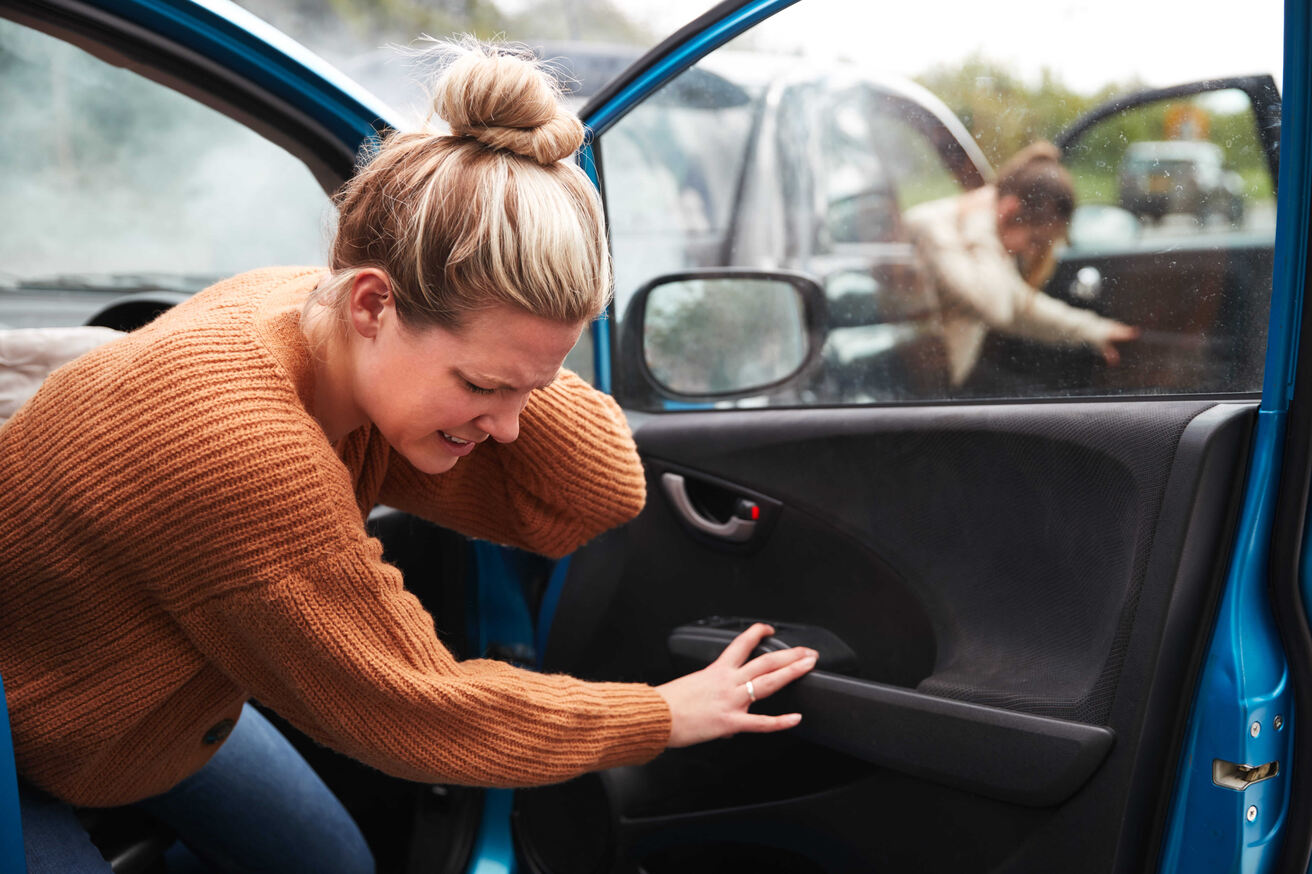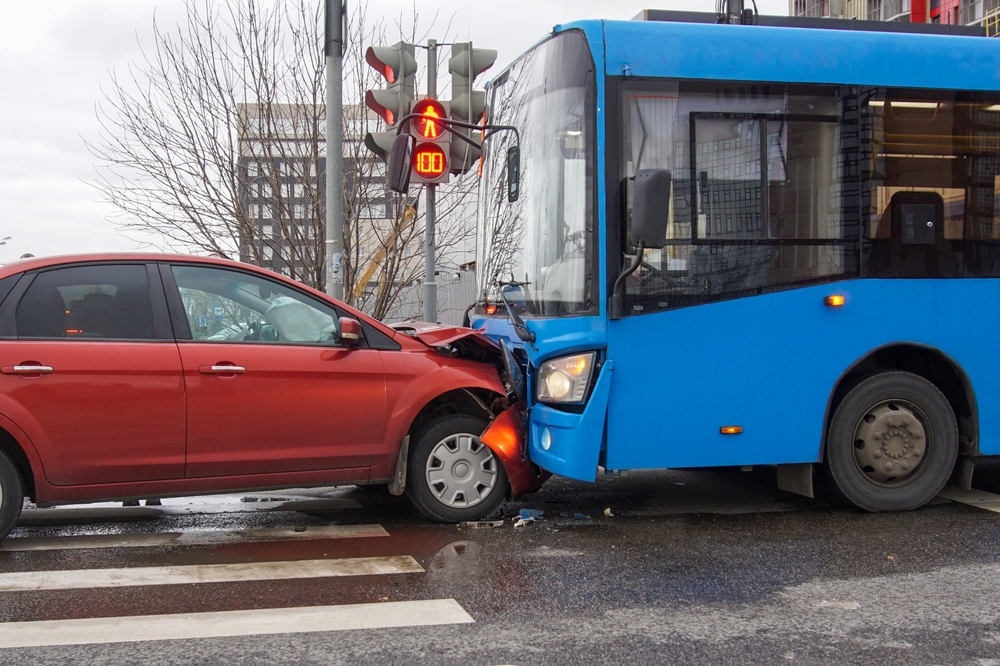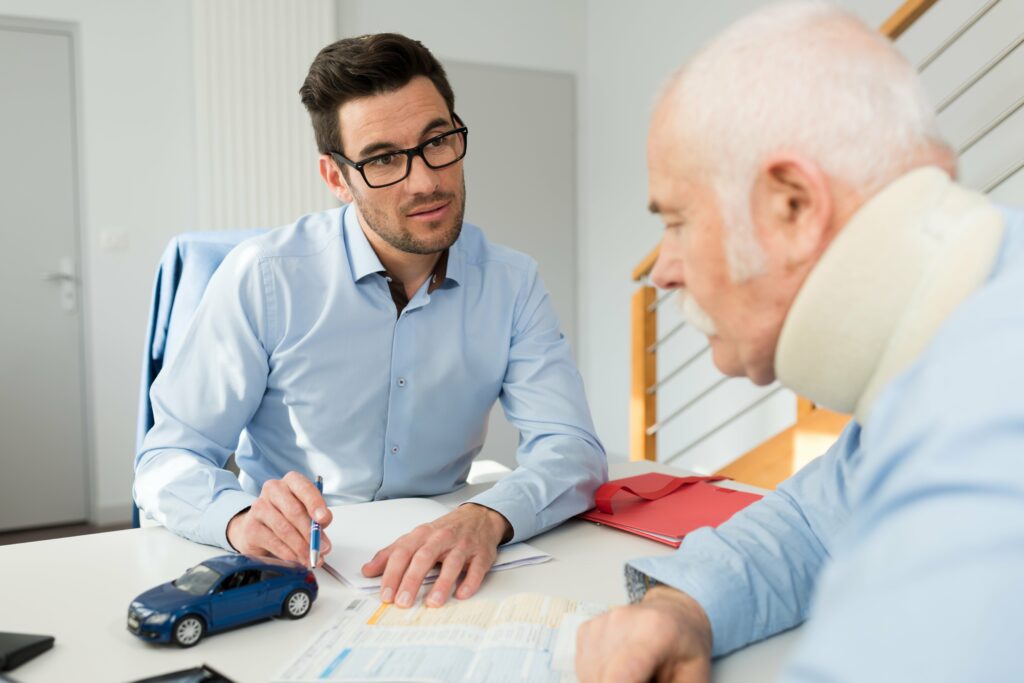Every year, thousands of car accidents occur on Nevada’s roadways, leaving countless individuals dealing with the physical, emotional, and financial aftermath. The expenses for treating injuries from car accidents can quickly pile up, ranging from emergency room visits to ongoing rehabilitation.
If you’ve been injured in a car accident, the Law Offices of Friedman and Throop are here to help. Our experienced attorneys understand the complexities of personal injury cases and are dedicated to helping you secure the compensation you deserve. Whether you’ve sustained a head injury from a car accident, a neck injury after a car accident, or other serious harm, we’re here to support you every step of the way.
Nevada’s 10 Most Common Car Accident Injuries and Causes
Car accidents can cause a wide range of injuries, from minor bruises to life-altering conditions. Below, we’ve outlined the most common injuries resulting from vehicle collisions in Nevada.
1. Whiplash
Whiplash is one of the most common injuries sustained in a car crash, particularly in rear-end collisions. This condition occurs when the neck is forcefully jerked forward and backward, causing strain to the muscles and ligaments. Symptoms include neck pain, stiffness, and limited range of motion, which may persist for weeks or even months. Seeking prompt medical attention can help mitigate long-term effects.
2. Head Injuries
A head injury from a car accident can range from mild concussions to traumatic brain injuries (TBIs). These injuries often occur when the head strikes a steering wheel, dashboard, or window during a collision. Symptoms may include headaches, dizziness, memory loss, or nausea. TBIs, in particular, can have lasting cognitive and emotional impacts, requiring long-term medical care.
3. Neck Injuries
A neck injury after a car accident can extend beyond whiplash to include damage to vertebrae, discs, and nerves. Severe collisions may even result in cervical fractures or spinal cord injuries, potentially leading to paralysis. Early diagnosis and treatment are crucial for recovery and to prevent permanent disability.
4. Back Injuries
Back injuries are a frequent outcome of car accidents, often affecting the lower back. Herniated discs, spinal fractures, and soft tissue damage can lead to chronic pain and limited mobility. Victims may require physical therapy, surgery, or long-term pain management to regain their quality of life.
5. Broken Bones
Fractures are common in high-impact crashes, particularly in the arms, legs, ribs, and pelvis. Broken bones often require immobilization, surgery, and extended recovery periods. Ribs are especially vulnerable, and fractures here can complicate breathing and increase the risk of internal injuries.
6. Spinal Cord Injuries
Spinal cord injuries are among the most severe outcomes of car accidents. These injuries can result from a sudden, violent impact that fractures or dislocates the vertebrae, compressing or severing the spinal cord. The effects of a spinal cord injury depend on the location and severity of the damage, ranging from partial loss of sensation to complete paralysis below the injury site. Victims often face extensive medical treatments, including surgery, rehabilitation, and the use of assistive devices. The long-term implications, such as loss of independence and chronic pain, make spinal cord injuries life-altering events.
7. Traumatic Brain Injuries (TBIs)
Traumatic brain injuries are caused by a blow or jolt to the head during a collision, leading to brain dysfunction. Symptoms of a TBI can vary widely, from mild headaches and confusion to severe memory loss, personality changes, and impaired motor skills. Recovery from TBIs often involves a multidisciplinary approach, including neurology, physical therapy, and psychological support. In severe cases, victims may never regain full functionality, making TBIs one of the most devastating injuries caused by car accidents.
8. Internal Injuries
Blunt force trauma during a car crash can cause damage to internal organs such as the liver, spleen, or kidneys. Internal bleeding is particularly dangerous because it isn’t immediately visible. Symptoms like abdominal pain, dizziness, or fainting should be addressed by emergency medical services without delay.
9. Soft Tissue Injuries
Soft tissue injuries include damage to muscles, ligaments, and tendons. These injuries can cause swelling, pain, and reduced mobility. While often considered minor, untreated soft tissue injuries can lead to chronic discomfort and functional limitations over time.
10. Psychological Trauma
Beyond physical injuries, many car accident victims experience psychological effects such as post-traumatic stress disorder (PTSD), anxiety, or depression. These emotional scars can interfere with daily life and often require therapy or counseling to overcome.
Common Causes of Auto Accidents in Nevada
Nevada’s bustling roadways see thousands of accidents each year, many of which are preventable. Understanding the leading causes of car accidents in the state can help drivers stay vigilant and reduce risks. Below, we explore the most common causes of auto accidents in Nevada and how they impact road safety.
1. Distracted Driving
Distracted driving remains the leading cause of car accidents in Nevada. Activities like texting, talking on the phone, eating, or adjusting the GPS can divert attention from the road, increasing the likelihood of a crash. In 2022 alone, distracted driving was responsible for over 3,000 accidents statewide. Staying focused and avoiding multitasking while driving can significantly reduce the risk.
2. Speeding
Exceeding the speed limit or driving too fast for road conditions is a major contributor to traffic collisions. Speeding reduces reaction time and increases the force of impact during a crash, often leading to severe injuries or fatalities. Nevada Highway Patrol regularly enforces speed limits to curb this dangerous behavior, but drivers must take personal responsibility to slow down.
3. Driving Under the Influence (DUI)
Driving under the influence of alcohol or drugs is a leading cause of fatal car accidents in Nevada. Impaired drivers have reduced reaction times and impaired judgment, making them a danger to themselves and others. Despite strict DUI laws and enforcement, impaired driving incidents continue to claim lives each year. Planning for a designated driver or using rideshare services can save lives.
4. Reckless Driving
Reckless driving encompasses behaviors such as aggressive lane changes, tailgating, and ignoring traffic signals. These actions not only endanger the reckless driver but also pose a significant risk to others on the road. In Nevada, reckless driving offenses often result in severe penalties, yet the behavior persists as a common cause of accidents.
5. Running Red Lights and Stop Signs
Failing to obey traffic signals is a common factor in intersection-related crashes. Running red lights or stop signs can lead to high-impact collisions, particularly T-bone accidents, which often result in severe injuries or fatalities. Nevada’s law enforcement agencies frequently monitor intersections to catch violators and reduce this risk.
6. Weather Conditions
Nevada’s unpredictable weather, including sudden rainstorms or icy roads in winter, can create hazardous driving conditions. Slick roadways reduce traction, making it difficult for drivers to maintain control or stop in time. Drivers should adjust their speed and maintain a safe following distance during inclement weather to avoid accidents.
7. Fatigued Driving
Drowsy driving is a silent but deadly cause of accidents. Fatigued drivers have slower reaction times and may even fall asleep at the wheel. Nevada’s long, desolate highways can exacerbate this issue, particularly for truck drivers and travelers. Taking regular breaks and avoiding driving during late-night hours can mitigate the risks associated with fatigue.
8. Failure to Yield
Failing to yield the right of way, whether at intersections, crosswalks, or when merging onto highways, is a frequent cause of accidents. This often stems from impatience or misunderstanding of traffic rules. Educating drivers and promoting defensive driving practices can help reduce these preventable collisions.
9. Poor Road Maintenance
Potholes, uneven pavement, and inadequate signage are common issues on Nevada’s roadways that contribute to accidents. Poor road conditions can cause drivers to lose control or damage their vehicles, leading to crashes. Reporting hazardous road conditions to local authorities can help improve safety for all road users.
10. Vehicle Malfunctions
Mechanical failures, such as brake issues, tire blowouts, or engine problems, can lead to accidents, particularly at high speeds. Regular vehicle maintenance and inspections are crucial to ensure that cars are roadworthy and to prevent these avoidable incidents.
What To Do If You’re Injured in a Car Accident
Being injured in a car accident can be a stressful and overwhelming experience—it’s important to know what steps to take to protect your health and your legal rights. If you’ve been involved in a collision, here’s what you should do next:
- Seek Immediate Medical Attention
Even if you don’t feel serious pain immediately, some common car accident injuries—like internal injuries or whiplash—may not show symptoms right away. Always consult a healthcare professional to assess your injuries from car accidents thoroughly. - Document the Accident Scene
Gather as much information as possible from the scene, including photos, witness statements, and a copy of the police report. This documentation will be essential if you need to file an insurance claim or pursue legal action. - Contact a Trusted Attorney
Once you’ve received medical attention, it’s time to consult a qualified attorney. If you’ve sustained injuries from car accidents, especially if they involve a head injury from a car accident or significant neck injury after a car accident, a skilled legal team like Friedman and Throop can help you understand your rights and guide you through the legal process. Insurance companies are often focused on minimizing payouts, so having an experienced lawyer in your corner is crucial. - Understand Your Legal Options
An experienced attorney at Friedman and Throop can assess your situation and explain the options available to you, whether it’s negotiating a settlement or pursuing a lawsuit. For more details on whether you need an attorney after a car accident, check out Do I Need an Attorney for a Car Accident?. - File Your Claim
Your attorney will work with you to ensure all necessary documentation is submitted to your insurance provider and, if applicable, the at-fault driver’s insurer. A comprehensive claim is critical in securing fair compensation for your medical bills, lost wages, and other accident-related expenses.
If you’re unsure how to start the process, you can also check out How to Choose a Car Accident Lawyer in Reno for more information on selecting the right attorney.



